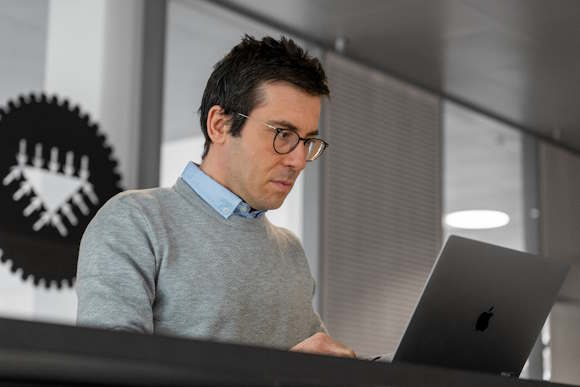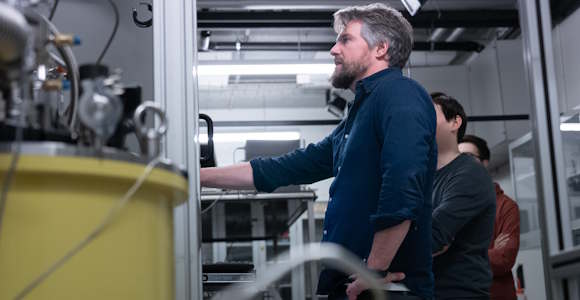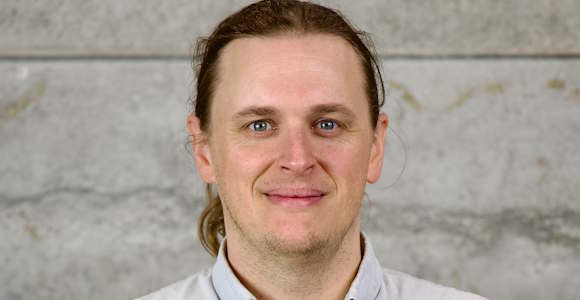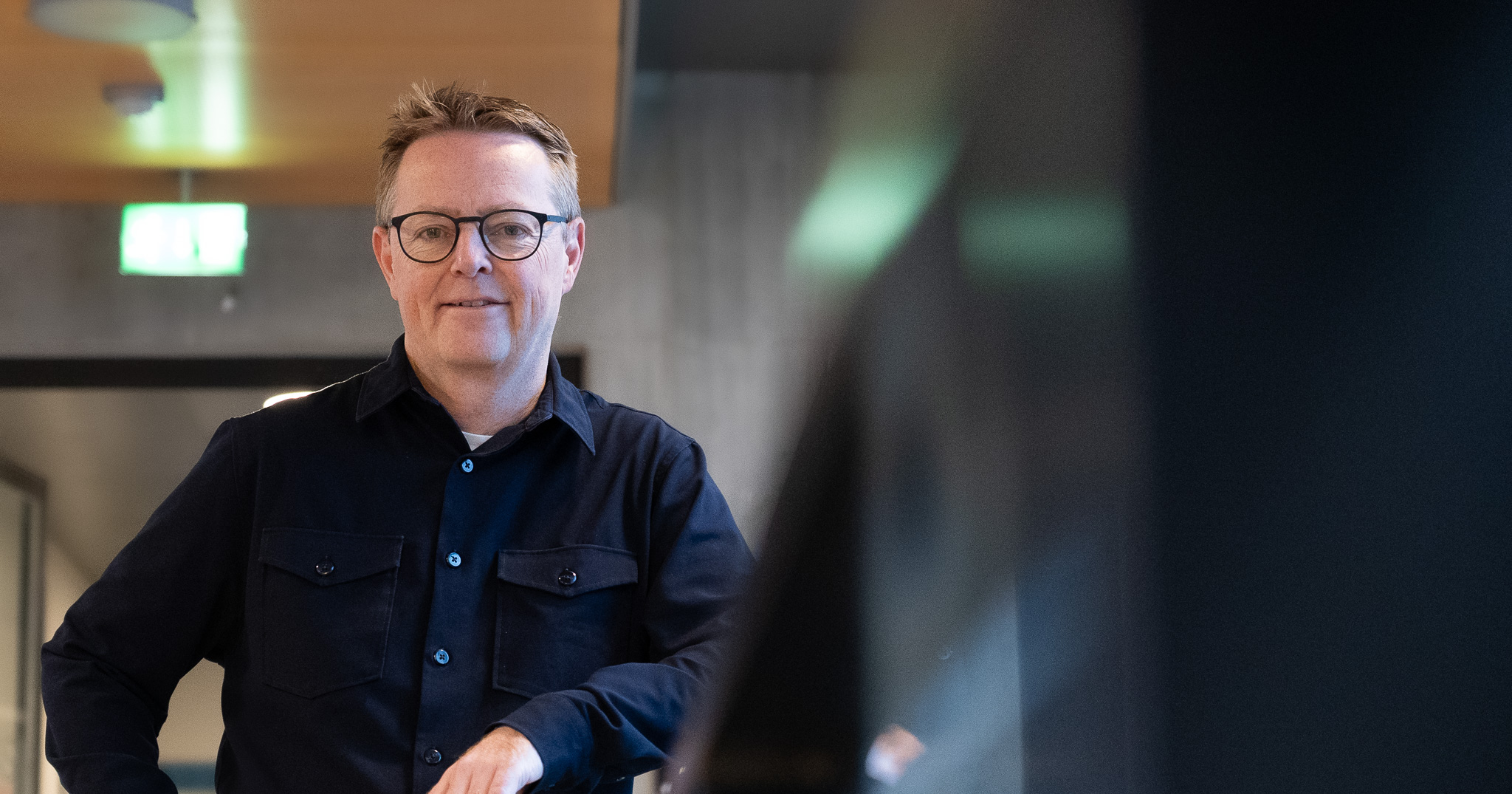
Four NAT researchers receive support from the Independent Research Fund Denmark
Manuel Meyer, Nils Færgeman, Melih Kandemir, and James McPherson receive a total of DKK 12.5 million for new research projects.
Independent Research Fund Denmark has awarded DKK 558 million to 182 research projects through the instrument DFF–Research Project1, which supports free, groundbreaking research. The grants are awarded to talented researchers who each receive up to DKK 2.5 million to pursue their own original ideas.
At SDU, 16 researchers have received grants, four of whom are from the Faculty of Science. The following science researchers have received support:

Melih Kandemir,computer scientist and associate professor
at Department of Mathematics and Computer Science has received DKK 3,162,240 for a project about artificial intelligence: Trustworthy Generalist Agents via Latent Reinforcement Learning.
Modern generative AI (GenAI) systems such as Sora and Gemini can already perform a wide range of cognitively demanding tasks — like travel planning, text summarization, and visual scene generation — at nearly human-level performance. The researchers argue that artificial general intelligence (AGI) has already been achieved within such information-processing and content-generation domains. The next major challenge for AI is to develop generalist agents — GenAI systems that can act (for instance, humanoid personal assistants) — and continuously improve their abilities throughout their lifetime. Kandemir argues that such agents will not emerge simply by feeding GenAI systems more computational power or massive datasets aggregated from the web. Instead, this requires collecting vast amounts of data from robots interacting with the real world and with users. The learning algorithms used by such agents must therefore be both powerful and trustworthy. This project will explore how to systematically balance these competing goals by combining theoretical and applied machine learning tools. It will also deliver a prototype implementation of generalist agents to evaluate results and inspire further research. Potential applications include elderly care, wearable robotics for rehabilitation, and microrobotic drug delivery.

Manuel Meyer,physicist and associate professor
at Department of Physics, Chemistry and Pharmacy has received DKK 3,168,000 for a project on dark matter: Realizing Ultra-low Backgrounds for Cryogenic Single Photon Detectors for Axion Dark Matter Searches.
Detecting dark matter (DM) particles — believed to make up more than 80% of all matter in the universe — remains one of the most fundamental problems in physics. One of the most promising DM candidates is the axion, which can be detected in high-precision experiments far smaller than particle accelerators, through a rare process where axions are converted into electromagnetic radiation in a strong magnetic field. An example is so-called “light-through-a-wall” experiments, where powerful lasers pass through a magnetic field. Some of the photons are converted into axions that cross an opaque barrier and are then converted back into photons in a magnetic field on the other side. This conversion is expected to produce about one photon per day, requiring detectors with extremely high efficiency and very low background noise. Such performance may be achieved with single-photon detectors operating below -271 °C. Meyer’s goal is to reduce detector background to record-low levels, enabling experiments to search for axions. To achieve this, the project will develop a cryogenic optical filter that blocks photons of the wrong wavelength. The filter will also have applications beyond dark matter research — for instance, in quantum information technology.

James McPherson, chemist and assistant professor
at Department of Physics, Chemistry and Pharmacy has received DKK 3,162,240 kr. for a project on sustainable technology: Metal–organic hydride frameworks for multi-electron reductions.
Reduction reactions involving the transfer of more than one electron to a molecule will play a vital role in the green transition toward sustainable technologies. Such reactions often rely on hydrogen gas, which can be produced directly and without CO₂ emissions through water electrolysis. However, high temperatures and pressures are currently required for large-scale industrial applications, and efficient transport of gaseous fuels remains a major challenge. Inspired by nature’s own strategies — where organic molecules (redox cofactors) are used instead of hydrogen gas to store, transport, and deliver reducing equivalents — the project aims to develop synthetic models of these redox-active cofactors. They will be immobilized in porous 3D materials based on organic ligands and metal ions, creating well-defined redox-active microenvironments with unique reactivity and selectivity unattainable in homogeneous solutions. These systems will be designed to facilitate hydride transfers to small molecules such as CO₂ or O₂ — either harmful or low-value substances — to selectively produce valuable chemicals like methanol or hydrogen peroxide.

Nils Færgeman, molecular biologist and professor
at Department of Biochemistry and Molecular Biology has received DKK 3,168,000 for a project on type 2-diabetes: From exercise to molecule: deciphering the actions of exercise-induced metabolites in metabolic health.
Exercise is one of the most effective ways to prevent and treat type 2 diabetes, yet we still know surprisingly little about what happens at the molecular level when we exercise. In this project, Færgeman’s group will investigate the metabolite hydroxyphenyllactate (HPLA), which they have discovered increases after intense exercise and correlates with improved insulin sensitivity. They have also observed that HPLA can improve blood sugar regulation in mice even without exercise. The project aims to uncover how HPLA functions in the body: which signaling pathways it activates, which tissues it originates from, and what chemical form is biologically active. The researchers will also seek to identify the cellular receptor that binds HPLA and mediates its metabolic effects. Ultimately, their findings could open new therapeutic avenues — particularly for people unable to engage in physical activity — by harnessing the body’s own signaling molecules to promote health in new ways.
The success rate is 10%
- Free research is an investment in tomorrow’s insights. This is where surprising breakthroughs begin – in the researchers’ own questions. It’s a big day when so many strong ideas get the chance to see if their wings will carry them. We are proud to make that possible, says Søren Serritzlew, Chair of the Board of Independent Research Fund Denmark.
DFF–Research Project1 is the instrument with the highest number of annual grants for free and researcher-initiated research. It is designed to give researchers the opportunity to test or develop their best research ideas. All projects are assessed and selected by the fund’s five academic research councils.
Independent Research Fund Denmark received 1,801 applications for DFF–Research Project1.DKK 558.3 million has been awarded to 182 projects. The success rate is 10%, based on the number of applications.